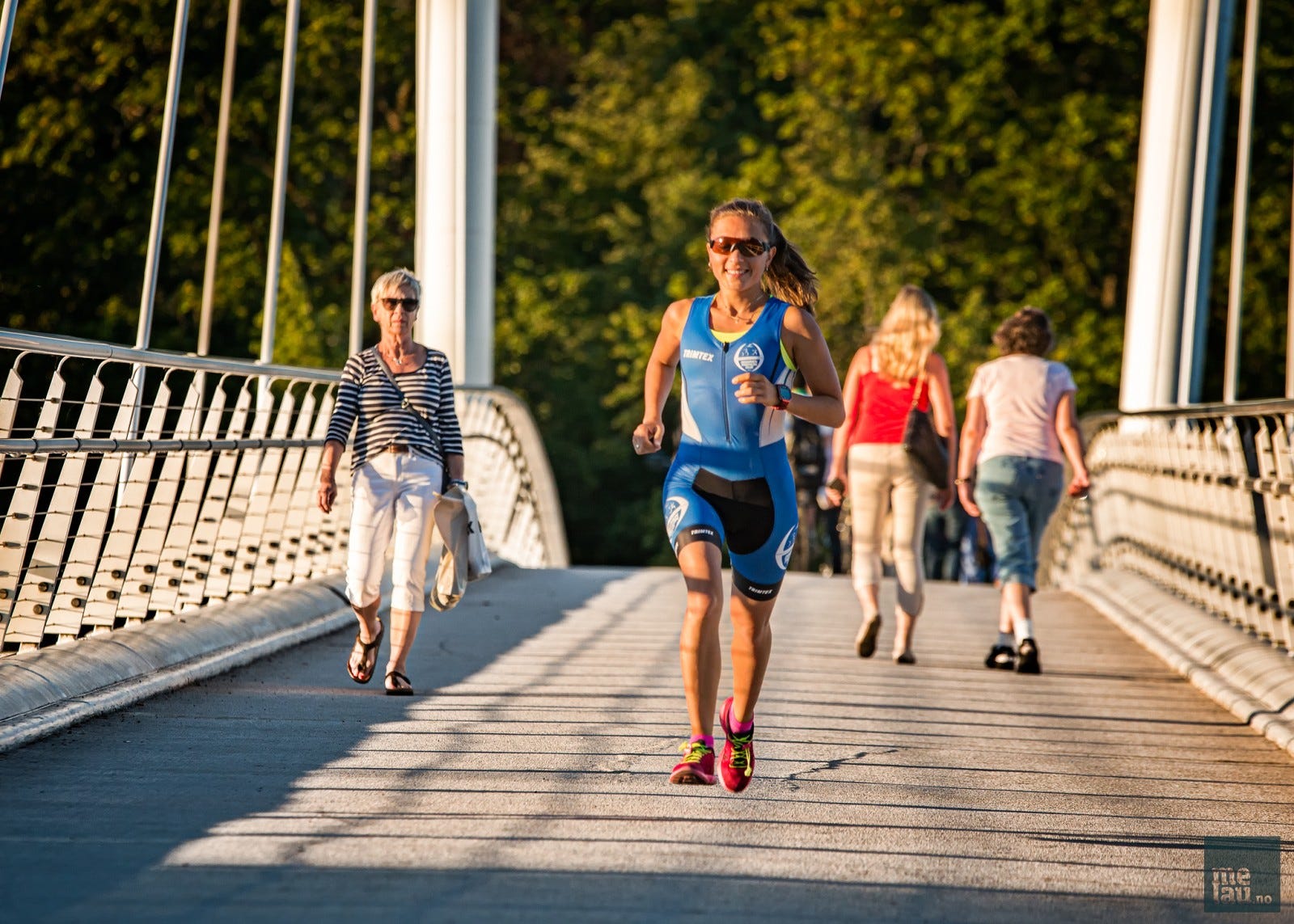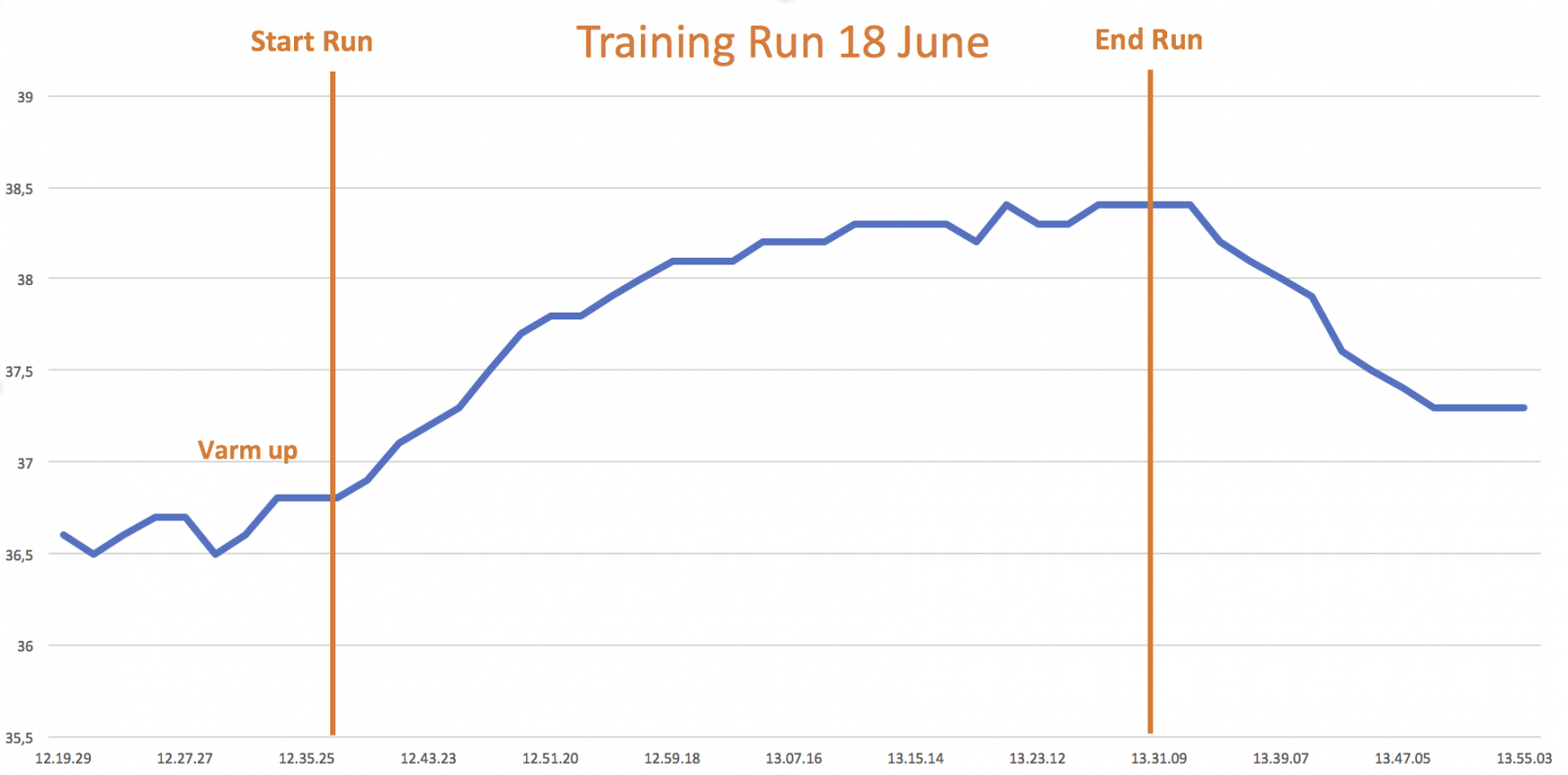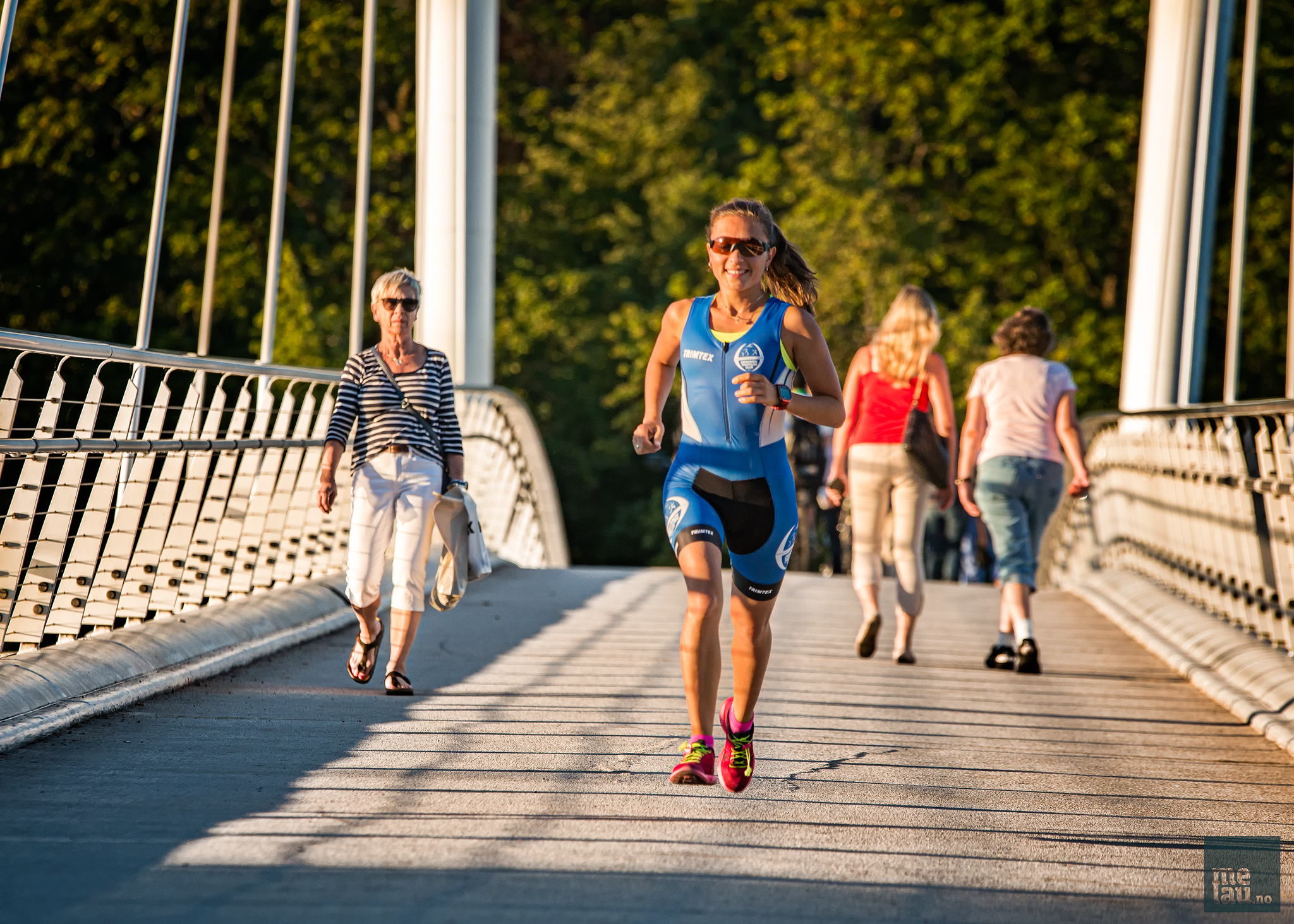If you do some endurance- or weight training, it should be of no surprise to you that your body temperature increases during physical training. But do you know how much it increase?

(I have no pictures of myself running, so this is Galina running at a photo session for 3atlet.no)
About a year ago, we did some testing on Olympic athletes in Oslo. Preparing for Tokyo Olympics, they did endurance testing in a heated lab at 35°C. We will publish these results later. It is very interesting results. But how about ordinary individuals who train in normal Scandinavian weather conditions?
Today I did a test on myself. I swallowed one of the temperature capsules we use on athletes. They are made in France and measure the body core temperature every 30 sec. Then I did one of my training runs in Stavern. About 50 min of running at low to moderate intensity. That is zone 2 and 3 if you are familiar with endurance training zones. Way below lactate threshold. Air temperature was 22°C, which is a warm Norwegian summer day.
Below is how my body core temperature raise during the run. As you can see it is increasing pretty fast when I start running. And it seems to reach a plateau at slightly below 38.5°C. If my intensity had been higher, the core temperature probably had been higher. We will later show you all how the body temperature raises in athletes at ÖtillÖ Utö and a ½ Ironman race called Halv-Fet.

But how will this affect your endurance? What happens if your core temperature raise even higher than this? We´ll hope to give you some answers to that in the years to come.


